I am a true water enthusiast. The feeling of gliding over the water or battling against the waves has become an intrinsic part of my soul. My faithful accessory in this love for water sports is my trusty kayak. And every time a plan for a kayaking trip comes up, I find myself trying to answer this question – how far can a kayak stick out of a truck? It might appear to be a trivial query, but believe me, it’s a critical detail you should know in planning your water-bound ventures.
There’s a lot to consider when preparing for a kayaking expedition. It’s not just the excitement of paddling down the waterway or the peaceful tranquility that accompanies each stroke of the paddle. Equally important are elements like logistics, transportation, and ensuring that you comply with local rules and regulations concerning this matter. Safety for self and for other road users comes first! Hence, whether you’re a seasoned kayaker or a newbie to the thrill of kayaking, knowing how much your kayak can protrude from your truck bed is a vital prerequisite to any kayaking journey, to avoid last-minute hitches and complications.
In the following write-up, I will delve into the legal and safety guidelines surrounding this issue, the techniques to load a kayak onto your truck correctly and securely, and many other essentials that ensure a smooth, safe, and memorable kayaking trip. Fasten your seatbelts, let’s unravel this together!
Contents
Contents
Understanding Transportation Laws of 2024
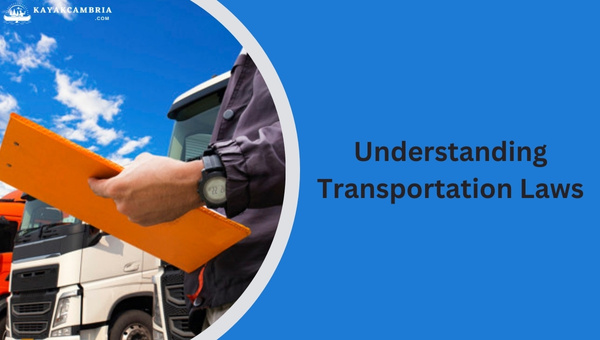
Transportation laws are the guidelines that govern how we can safely and legally carry cargo – in our case, a kayak – on our vehicles. It’s imperative to note that these laws exist for the sake of everyone’s safety, both drivers and other road users.
Transportation laws vary widely, and before loading your kayak onto your truck, it’s a critical first step to research the specific laws governing your state or jurisdiction. Different states might have differing guidelines on how much a load can overhang the back, sides, or front of a vehicle. In fact, the authorities may even specify the type of vehicle that’s permissible to anchor such cargo. Besides, some states stipulate that any material that protrudes beyond a certain limit must have a red warning flag attached to it.
The extension usually allowed across states generally tends to be 3 to 4 feet beyond the vehicle’s rear. However, anything beyond 4 feet usually needs to be marked with a red flag. The exact measurement can change so always double-check the local regulations!
Remember that transportation laws are in place not only to ensure that your kayak doesn’t become a danger or nuisance on the road, but also to protect it from damage. Ignorance of these rules might invite penalties or fines, or even worse, accidents causing damage to your beloved kayak, other vehicles, or pedestrians.
Take the time to communicate with your local Department of Transportation’s office. It’s the surest way to understand the regulations and learn the right ways to transport your water companion safely and responsibly!
How Transportation Laws Vary By State Or Jurisdiction?

Transportation laws in the United States often vary greatly from one state to another. Each jurisdiction has the authority to enforce specific restrictions and regulations concerning how cargo, like a kayak, can protrude from a truck or any other vehicle.
In many states, the law generally stipulates that any load extending more than 4 feet beyond the rear of the vehicle needs to be clearly marked. While in some other areas, the permissible protrusion length can go up to 10 feet. Nevertheless, these laws are subject to change, and it’s always important to double-check with local transportation authorities.
In cities or states with more rigorous regulations, such as California, you may find that cargo must not extend more than two feet to the front of the automobile, overhang three feet to the rear, and not beyond the line of the fenders on the left side. On the other hand, some less strict areas, like Arizona, state the load may stick out up to 3 feet in front, 6 feet in the back, and no limit is defined for the left-hand side.
It’s not always easy to keep up with specifics, especially when you are traveling interstate. Hence, the safest option is to keep your kayak within the 4 feet mark. However, it is always advisable to research and consult the local regulations of your particular city or state.
One useful resource could be the official Department of Transportation (DOT) website for your state. There, you can find up-to-date information on the transportation laws that apply to you, ensuring you’re following both the laws and safe practices for securing your kayak and other load.
While transportation laws may seem daunting, a little bit of research goes a long way. Investing your time in understanding these laws could save you from any possible fines, inconveniences, and potentially dangerous situations on the road.
Techniques For Loading A Kayak Onto A Truck
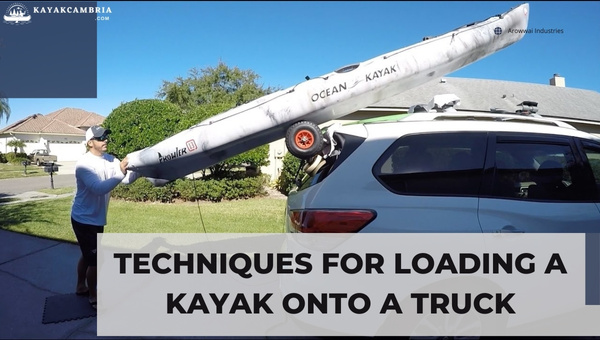
When it comes to hauling around something as substantial as a kayak, you’ll want to have a few pointers up your sleeve. There are several ways of loading a kayak onto a truck, and I’m going to share some of the techniques that I find most effective.
Use the Right Equipment
Foremost, you want to use the right equipment. A kayak rack or truck bed rack comes in handy in these situations. These tools aid in providing a stable platform for the kayak and spreading out the weight across the length of your pickup. There are several impressive models out there such as the Thule Xsporter Pro which feature sturdy aluminum construction and a high load capacity.
If you don’t want to opt for a clamp-on rack, the alternative would be a bed extender. Your kayak usually fits well in this, sticking out from the bed of the truck. It’s a simple, highly effective tool and considerably less expensive.
The Art of Positioning
Loading a kayak onto your vehicle can be a bit like figuring out a puzzle. I like to first rest my kayak against the tailgate of the truck. I then lift the other end and guide the kayak up and into the truck bed rack or extender. Ideally, the kayak should lie flat along these supports.
One key point to remember, if your kayak extends beyond the truck bed, ensure it doesn’t exceed legal limits. A quick check with both your local and state transportation regulations will clarify these specifics.
Securing Your Kayak
Tie-down straps have proven to be my best friends on these occasions. They provide a simple and effective way to secure the kayak to the rack or extender. Remember to run these straps over and through the kayak, then tighten them to a tension that holds the kayak firmly in place. Do not over tighten as this can damage your kayak.
Flagging the Kayak
Lastly, once you have secured your kayak, don’t forget to flag the rear. If your kayak extends a few feet beyond the truck, it becomes necessary, and often a legal requirement, to attach a red or bright orange flag on the end sticking out. This allows other drivers to be aware of your extended load and maintain a safe distance.
These are the key contours of loading a kayak onto a truck. Always remember, safety is paramount when transporting any equipment, and your kayak is no exception. So before you set out on your next river adventure, double-check all your load safety elements. Doing so just may save you and others from a dangerous situation on the road.
Taking Extra Precautions

When it comes to strapping a kayak onto a truck, safety should be your topmost priority. It’s not just about ensuring the kayak doesn’t fall off during your drive, but it’s also about preventing accidents due to restricted visibility or unexpected shifts in load. Here are some tips to keep in mind.
Signaling the Long Load
Always mark the ends of your protruding load with a brightly colored flag during the day and reflectors or lights at night. It’s not only mandatory according to transportation laws in most states but also crucial for the safety of other vehicles sharing the road with you.
Regular Checks
Once your kayak is secured and flagged appropriately, your job isn’t over yet. Make a point to stop regularly during your journey and check to ensure that the kayak hasn’t shifted and is still securely affixed. This is especially important during long drives or when you’re on bumpier routes.
Consulting with Professionals and Experienced Kayakers
If you’re a newbie or unaware of the requirements, it’s ideal to consult professionals or experienced kayakers. They can guide you through the process or even recommend equipment that could make loading and unloading your kayak easier and safer.
With the right attention to detail and by taking these extra precautions, you can ensure safe and hassle-free transportation of your kayak. This way, the only thing you need to focus on during your drive to the water is the adventure that awaits you. Always remember, it’s better to be safe than sorry – an unsecured kayak can cause severe harm, not just to you, but to others on the road as well. So, follow the rules, and ensure you’re compliant with the laws while you head out for your next kayaking adventure.
Safety Measures During Transportation
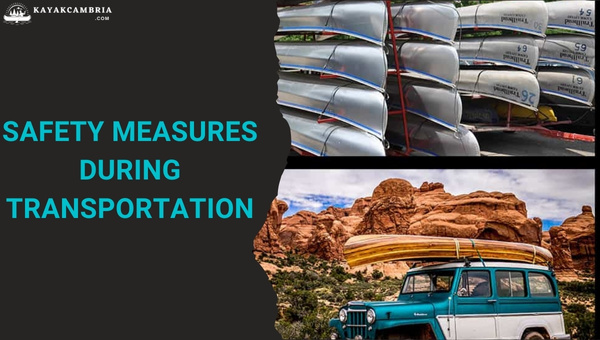
The thrill of an impending kayaking adventure can often make us overlook certain critical aspects, like the safety measures that need to be adhered to during the transportation of your kayak.
Ensure the Kayak is Secure
Primarily, it is paramount that your kayak is securely fastened to the truck. The last thing that we want is a loose kayak on the road – that is a recipe for disaster. Our advice here is to use sturdy, heavy-duty tie-down straps that are capable of effectively holding your kayak in place. It’s also a good idea to use bow and stern tie-downs to give extra security. After securing your kayak, give it a good tug to make sure it won’t move during transit.
Be Mindful of Wind Resistance and Speed
Next, consider the speed at which you are driving and the wind resistance your kayak will face. A loose or improperly tucked kayak can become a sail in high winds, affecting your vehicle’s stability while driving at high speeds on the motorway. So always maintain a prudent speed when you have a kayak protruding out of your truck.
Adhere to Vehicle Width Limits
Moreover, be aware of your vehicle’s width. The kayak should not extend excessively on either side of your truck, as this could create hazardous situations. According to federal law, a personal-use vehicle should not exceed 102 inches in width, including all protruding items such as mirrors and, in this case, your kayak.
Regularly Inspecting Your Kayak
Finally, regular inspections during the journey are essential. Take quick breaks at regular intervals to check if everything is in order and your kayak is still secured firmly. This practice might seem tedious, but the peace of mind it brings can make your adventure even more enjoyable.
Arguably, these pointers might sound a bit daunting initially, especially if you are a newbie at kayaking. But trust me, with practice, you’ll quickly master the art of safely transporting your kayak, thereby ensuring the safety of everyone on the road, including yourself.
Exploring The Use Of A Trailer
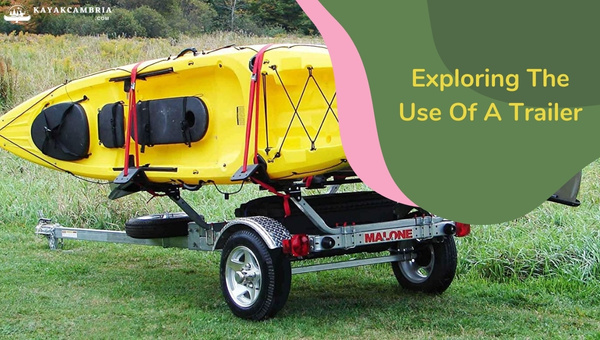
Sometimes, the length or number of kayaks simply makes it impractical to transport it in the truck bed. That’s where a trailer comes into play. Trailers are a fantastic option when you need to transport more than one kayak, or if your kayak simply won’t fit into your truck because of its size.
However, employing a trailer does come with its own unique set of challenges and considerations. Firstly, you need to ensure your vehicle can handle the additional weight of the trailer and your kayak. Thankfully, most kayaks aren’t exceptionally heavy, so this isn’t typically an issue for most truck models.
But there’s more to it than just hitching up a trailer and setting off on your journey. Indeed, you have to understand how to properly balance the load on the trailer. This includes ensuring that the weight is evenly distributed for optimal handling and safety.
Another important thing to remember is that some places require additional licensing or registration for certain types of trailers. Therefore, it’s keenly essential to look up your state’s regulations to ensure you are legally compliant.
The advantage of using a trailer is you don’t have to worry about strapping your kayak to the roof or the bed of the truck. This reduces the overall height of the vehicle configuration and minimizes the chances of wind resistance. It also makes loading and unloading your kayak a breeze, thereby saving time and energy.
However, on the flip side, a trailer can complicate driving, particularly in traffic or while making tight turns. But with a bit of practice, you can master maneuvering the trailer in no time!
One final note, always ensure your trailer’s lights and indicators are working correctly and are synched with your vehicle’s lights. This is not only a legal requirement, but a critical safety measure to let other motorists know of your intentions on the road.
The use of a trailer for transporting a kayak has nuanced positives and negatives. For some, its plug-and-play convenience trumps its drawbacks making it an ideal solution while for others, the potential driving challenges may overrule its benefits.
In the end, it’s all about understanding your transportation needs, your skill, and comfort level with handling trailers, and your local regulations. Making an informed choice is key here.
Optimizing Space: Kayaking Equipment Storage Tips
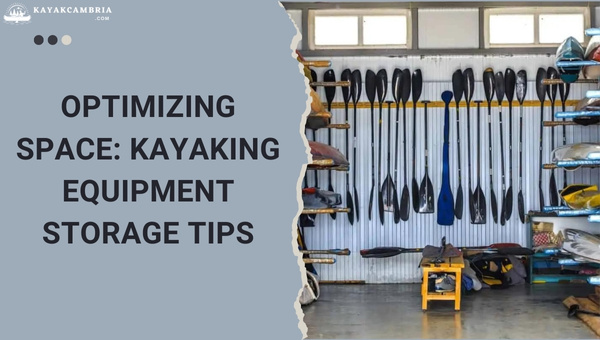
When it comes to transporting your kayak, there’s a lot more to it than just the boat. There are various paddling essentials to consider such as the paddle, protective gear, a life jacket, dry bags, and other aquatic accessories. Below are some innovative ways to create extra space and tips to organize your gear efficiently.
Paddles and Life Jackets
1. Use Roof Rack Accessories:
These accessories come in handy for storing paddles and life jackets. Make use of paddle holders that attach to your roof rack. They can help keep your paddle safe while freeing up space in the truck bed for other equipment.
2. Utilize Seat-Back Storage:
Most trucks and SUVs come with pockets located at the back of the front seats. These pockets can conveniently hold life jackets, making them quickly accessible in case of an emergency.
Dry Bags and Aquatic Accessories
3. Use Truck Bed Organizers:
Truck bed organizers with various compartments can keep your equipment in place during transport. Dry bags, coolers and other accessories can be easily nestled in these organizers.
4. Opt for Hitch-Mounted Cargo Carriers:
If you have heavy equipment, a hitch-mounted cargo carrier is a worthwhile investment. These carriers can hold a good amount of weight and can be a great spot to store larger gear for your kayaking trip.
Reducing Drag to Increase Vehicle Fuel Efficiency
Successful transportation of a kayak also requires knowledge of how to reduce drag, or air resistance, for better fuel efficiency.
5. Place the Kayak Upside-Down:
Most kayaks have a flatter and smoother surface at the bottom. Therefore, placing your kayak upside-down on the roof rack can reduce wind resistance during your drive.
6. Secure Your Kayak Close to the Car:
Keeping your kayak as close to the car as possible ensures the wind passes over the car and kayak simultaneously, reducing any additional resistance due to a widespread.
Remember, a well-organized vehicle will not only make your journey more comfortable and efficient but also leads to safer travel conditions for everyone on the road. Happy and safe kayaking to you all!
Knowing The Consequences Of Non-Compliance

Ignoring transportation laws or opting for unsafe transportation of your kayak can lead to dire consequences. Let’s delve into some potential mishaps and misunderstandings that could occur if you fail to comply with regulations and safety measures.
Traffic Violations and Fines
Failing to adhere to transportation laws can result in hefty fines or even the suspension of your driver’s license. Just how much the penalty will be varies widely depending on where you live. Before heading out, it’s crucial to familiarize yourself with any specific local laws for your region.
Damages to Your Vehicle
An improperly loaded kayak isn’t just dangerous to other vehicles on the road, but it can also pose a risk to your own vehicle. If not secured correctly, your kayak can fall off and not only damage your vehicle, but could become a hazard on the road, leading to traffic accidents.
Insurance Coverage
If you’ve ignored the legal laws regarding transportation and caused an accident, your insurance company can deny your claim. You need to be aware that any damage caused while performing illegal activities is seldom covered by insurance companies.
Risk of Accidents
A protruding kayak may make your truck imbalanced, increase the risk of toppling over while taking sharp turns, and make it more susceptible to winds. Moreover, a sudden stop or a bump in the road can cause your kayak to slide out, creating a threatening situation for you and other vehicles around.
Remember, non-compliance with laws and regulations regarding transportation can have serious consequences. It’s always best to ensure your kayak is secured safely and legally, to avoid any potential accidents or penalties. The rule of thumb is to convey common sense and respect for others on the road when transporting larger items like kayaks.
Insights And More: Interviews With Experienced Kayakers

To broaden our horizons on transporting kayaks safely and legally, I took it upon myself to collect unique insights from several experienced kayakers. Their years of experience and countless adventures offered an invaluable perspective on this topic. Their stories, tips, and advice lend an authentic touch to our discussion and, more importantly, help us to steer clear of common mistakes.
Meet the Kayakers
Tracy McNeil is a certified kayak instructor hailing from Colorado. Her philosophy is “Secure, Double-check, and Go!” She emphasizes the importance of checking the security of the kayak throughout the journey. “You can never be too careful; I often pull over every hour or so to check and adjust my rig if necessary. Always be conscious about how securely you have fastened your kayak and never compromise with safety guidelines,” Tracy suggests.
Mike Rogers, an experienced whitewater kayaker from Oregon, stands by the rule “Less is More!” He advises us to avoid overloading our trucks. “The focus should be on fitting the kayak safely, rather than cramming in all possible equipment. When I plan my trips, I make a checklist to ensure I only carry essentials and avoid unnecessary loading,” he offers.
Finally, Kate Bond, a leisure kayaker from Northern Minnesota, brought our attention to the importance of highly visible accessories. “A red flag is essential, but I also affix flashing LED lights for added visibility during foggy or rainy conditions. Ensuring that my kayak sticks out no more than 3-4 feet, along with these accessories, has made my travel much safer,” she shares.
The collective wisdom of these seasoned kayakers highlights a few key lessons. A routine check on your kayak’s security, avoiding overloading the truck, and improving your visible imprint on the road thus stand out as major recommendations. Armed with these insights, transporting your kayak should prove to be a smoother experience! Understanding the implications of adhering to (or disregarding) safety and legal outlines helps us ensure our adventure begins and ends on a high note.
Frequently Asked Questions
How far can a kayak stick out of a truck?
Typically, it depends on local laws. However, generally, there is a maximum limit of 4 feet from the rear of the vehicle. If it extends more than that, it’s mandatory to attach a red flag during the daytime or a red light at night to signal other motorists.
What could happen if I exceed the limit?
If your kayak extends more than the legal limit, you may be liable to pay fines. Furthermore, it can cause accidents leading to potential damage and even loss of life. You could even face issues with insurance coverage if the kayak is not secured or transported legally.
Do I need any special tools to transport my kayak safely and legally on my truck?
Secure straps are essential for safely transporting your kayak. Additionally, bed extenders or ladder racks can help accommodate the kayak safely. Always remember to ensure your kayak firmly stick to the truck to prevent any unwanted accidents.
How can I inform other motorists about my extending cargo?
It would be a good idea to attach a red flag or a red light to your extending cargo. This coding is universally recognized and typically mandatory under law for cargo extending more than 4 feet.
Is using a trailer a better option?
Using a trailer might be a more viable option if you have multiple kayaks or a larger kayak that exceeds the accepted limit of protrusion. However, you’ll need to look into additional registrations and licenses that might be required for a trailer.
Any additional tips for transporting my kayak?
Ensure that your kayak is secured properly before you start your journey. Routinely check the firmness of your ties during your travel to prevent unwanted movement. Also, think about the other gear you’ll need for your excursion and make sure everything is stored securely and efficiently.
Conclusion
Transporting a kayak safely and legally can seem like a daunting task. But it doesn’t have to be. With proper planning and awareness of local laws and regulations, we can easily avoid any transportation-related issues associated with kayaking trips. The key lies in gaining knowledge, following regulations, and using the proper equipment for securing the kayak to your vehicle.
Nobody wants to start off their adventure with a traffic citation or worse, an accident. Safety should always be our top priority. That means not only securing our kayaks properly but also ensuring they don’t stick out dangerously from our trucks.
Remember, the limit for how far a kayak can stick out from a truck may vary based on locality. So, I urge you to check the local state regulations before embarking on your journey.
Using indicators like flags or lights to highlight protruding objects can enhance the safety of your vehicle and others on the road. If you’re still unsure about any aspect of the loading process, professional advice is always a good idea to seek out.
I hope my article has given you a clearer understanding of how far a kayak can stick out of a truck and has laid the foundation for a future filled with safe and fun-filled kayaking expeditions. Happy kayaking!
Always remember, every great adventure begins with a single paddle stroke. So, pack your paddle, strap your kayak, and go create some lasting memories on the water!

